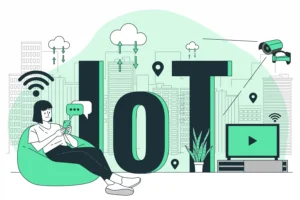What comes to your mind when you think of a Defect Detection System while manufacturing? Do you visualize a number of employees detecting any defect in the item produced? How reliable do you feel it is? Manual inspections are prone to errors. Despite being an experienced defect detector, a person can misidentify the accuracy of a product.
Apart from manufacturing, what about your employee’s safety? Do you manually scan and check if they are wearing masks? How do you know they are not taking their safety gadgets off when you are not looking? What if you are out on a break, and your employee gets injured due to a lack of safety regulation compliance? There is a greater risk of such instances when you rely on manual inspection methods.
Traditional manual inspection methods have followed us for ages. However, in this digital era, it is time to change. A Vision Defect Detection System demands low or no human interference and ensures seamless defect detection. Being driven by Artificial Intelligence, it is capable of recognizing minute details and catching slight defects such as scratches, dents, dust particles, and so on.
- It requires no or low human presence leaving more floor space free.
- An AI-based machine detects defects like scratches, dents, and dust more accurately than human eyes.
- Precise color differentiation is often missed by naked eyes.
- Drives faster and more accurate defect detection as compared to manual inspection.
- Cut costs, boost production, and ensure a better quality of produce. As soon as there is a mal production, the same is flashed on the monitor associated with the system.
- Quickly adaptable to different surfaces and products while being able to work 24/7 and maintaining consistency.
How to Choose the Right Vision Defect Detection System?
It is necessary to choose the right technology along with the right partner. There are numerous of them claiming to be the best, but you need to look through each carefully and decide. We have compiled a few factors you need to investigate before making the ultimate decision:
#1 Visual Defect Detection Should be Reinforced with AI (Artificial Intelligence)
When Artificial Intelligence is reinforcing a Defect Detection System, the operating principle of deep learning technology teaches machines to learn by example. By enabling a neural network to extract common patterns between those examples into a math equation which eventually helps classify future information.
With Visual Quality Inspection, integration of deep learning algorithms enables differentiating parts, characters, and anomalies which replicates a human Visual Defect Detection while operating a computer system.
#2 Check Customer’s Testimonies
While selecting a partner, do not skip going through their customers’ reviews, what industry they belonged to and what difficulties they faced. Evaluate the quality, services, schedule, duration, and cost of projects from every perspective. This can save you from getting tied up with an ineligible partner.
Evaluate their success rates and see how well they have served different industries. Analyze their pattern, and check if that works for you. How many businesses have they helped boost their production? Who has been or are currently their clients?
Also, check if their technology can match your requirements. What technology is the system based on? Is it AI or any other technology? AI-based technology is the best as it is the most flexible and can support any Defect Detection in Manufacturing.
#3 See if the Partner is Specialized in Your Industry
There are Visual Quality Inspection systems for different industries, identify the one that specializes in yours. It is always better to let an experienced partner in rather than letting an amateur handle your requirements for the sake of a few pounds less. A partner specializing in your industry will be well-versed with the upcoming challenges and the best solutions to tackle the same.
#4 For Manufacturing
For manufacturing, your Defect Detection Software has to identify little defects that human eyes might miss, such as:
- Component Presence: Detection of unwanted components like dust, stone, insects, small animals, etc.
- Small Defects: Defects like scratch, breakage, burn, dent, and chip, etc.
- Structural Quality: It should identify if the item’s structure is accurate and consistent.
- Spectrum Monitoring: The Defect Detection System should monitor the right color of the product.
- Measurement Accuracy: The correct dimensions of the product should be measured.
- Packaging Accuracy: The Visual Defect Detection in Manufacturing should also monitor how accurately a product has been packed.
#5 For Employee’s Safety
If you need a Vision Intelligence System for your employee’s safety in your manufacturing plant, make sure it supports face recognition to detect human faces by not wearing masks or other safety gadgets assigned to them. It should also be able to identify broken equipment such as disruption in harness, helmet, or any other PPE so you could quickly replace them with new pieces. It should also monitor if your employees are complying with other safety regulations such as social distancing. The system should immediately alert the authorities if they fail to do so.
Why Trident’s Vision Intelligence System?
With Trident’s Vision Intelligence System, you can:
- Reduce inspection time and engage your workforce in something more productive.
- Maintain process consistency with the help of Artificial Intelligence.
- Boost productivity while keeping up with quality standards.
- Makes sure your employees comply with the safety regulations.
Trident’s Vision Intelligence System is designed to provide an AI-based Vision Defect Detection System to manufacturers. It helps them boost their production and quality at the same time while keeping employees’ safety in mind. With a robust record of accomplishment, Trident Specializes in six industries: Automotive, Glass, FMCG, Cement, Laminate, Packaging.
Choosing the right partner is as important as selecting the right technology. Failing to do so can trap you in an unwanted situation for long. Make sure you analyze your requirements and research your options deeply.




